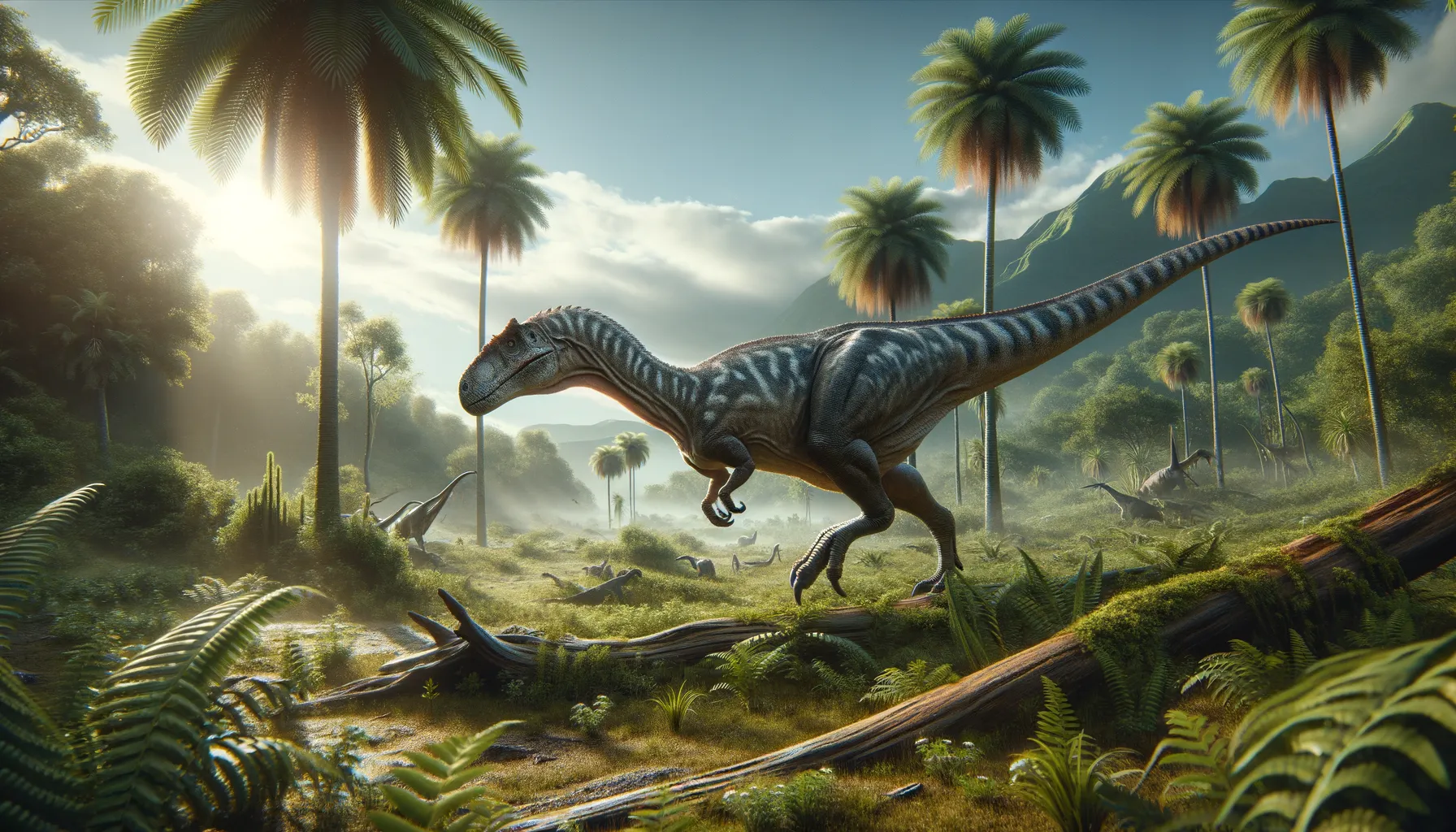
Guaibasaurus
Swift and agile from ancient times!
Period
Triassic
Length
Measured around 2 meters long.
Height
Approximately 0.5 meters tall at the hips.
Weight
Estimated to weigh around 10 to 15 kilograms.
Guaibasaurus was a small, early dinosaur from the Late Triassic period. This bipedal creature was an agile omnivore, suggesting it adapted well to its diverse environment. Fossil findings in Brazil indicate it might have been one of the earliest relatives of larger predatory dinosaurs, bridging the gap between early and more developed species. Its lightweight build suggests it was likely capable of swift movement, aiding in its survival amidst various predators and competitors.
Diet
Guaibasaurus is believed to have been an omnivore. It likely ate a mix of small animals and plants, adapting its diet to available resources. This flexibility would have helped it survive varying conditions.
Hunting
While not a top predator, it may have hunted small animals using its speed and agility. Quick reflexes likely allowed it to capture prey, while its size made it a less threatening competitor.
Environmental challenges
Living during the Late Triassic, Guaibasaurus faced fluctuating climates and competition. Its habitat underwent changes as reptiles diversified, possibly leading to food scarcity. Adaptive behaviors and a broad diet may have helped it face these hurdles. Staying vigilant for larger predators would have been crucial for its survival.
Speed
Likely moderate, suited for maneuverability.
Lifespan
Estimated to span several decades.
First discovery
Unearthed in the Rio Grande do Sul, Brazil, in the 1990s.
Fun Facts
- Guaibasaurus is one of the oldest known dinosaurs, dating back to the Late Triassic period about 225 million years ago.
- This dinosaur was found in South America, specifically in what is now Brazil.
- Guaibasaurus was a small, bipedal dinosaur that likely ate plants and insects, indicating it had an omnivorous diet.
- It had a long tail which helped it maintain balance while running.
- Despite its ancient age, Guaibasaurus was a relatively simple creature, providing insights into the early evolution of dinosaurs.
- The name Guaibasaurus means 'Guaíba lizard,' named after the Guaíba River near its discovery site.
- Guaibasaurus was not a giant; it was roughly the size of a turkey.
Growth and Development
Little is known about its specific growth patterns; however, it likely reached adulthood swiftly to evade predators. Like many early dinosaurs, Guaibasaurus may have exhibited traits common in agile, bipedal species. Growth rates were possibly influenced by environmental factors, impacting its life expectancy.
Habitat
Guaibasaurus inhabited regions resembling today's semi-arid environments with seasonal rainfall. Vegetation would have been sparser, requiring travel to find food and water. These conditions would have shaped its behavior and social interactions. Survival was likely driven by its adaptability and resourcefulness.
Interaction with other species
In its ecosystem, Guaibasaurus coexisted with early relatives of both herbivores and carnivores. Competition for food sources often led to confrontations. It likely avoided larger predators by using its speed. Cooperative behaviors may have included forming small groups for foraging.
Natural lifespan
Guaibasaurus likely lived for about two to three decades.
Reproduction
Guaibasaurus probably laid eggs, similar to many other early dinosaurs. It might have exhibited some parental care, protecting the nest from threats. Nesting sites remain inconclusively identified but would have been selected for safety.
Social behaviour
Some evidence suggests it may have traveled in small groups. Social structures, if any, remain unclear but would have been centered around resource gathering. Likely limited interactions beyond mating or group foraging occurred.
Fossil locations
Fossils were primarily found in Southern Brazil, providing insights into its early ecosystem. The region yielded well-preserved specimens that contributed to understanding evolutionary progressions. This location indicates its prevalence in parts of ancient South America during its period.
